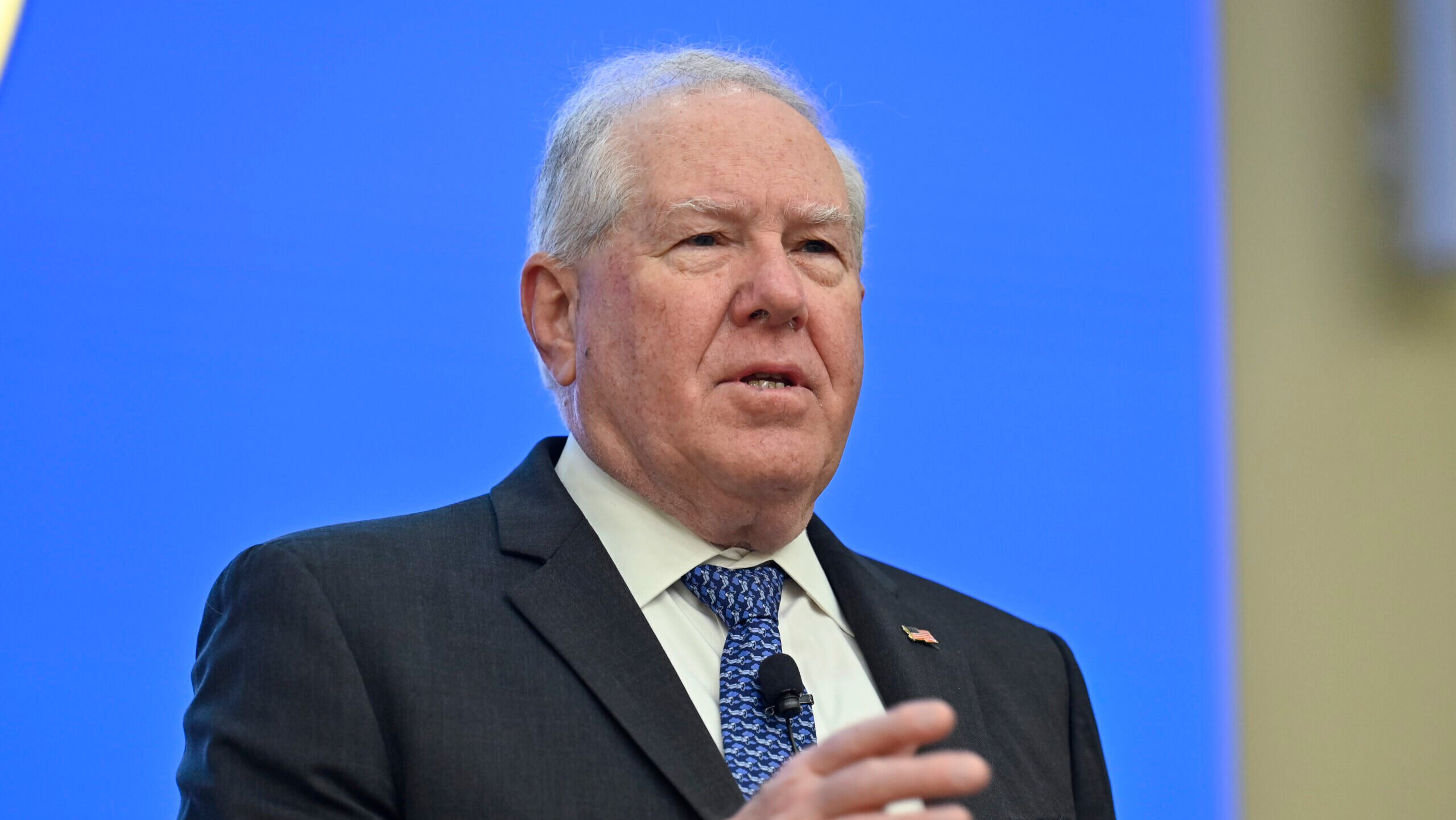
As a mathematician, Louis A. Caffarelli of the University of Texas at Austin attempts to answer seemingly simple, even potentially useful, questions:
-
How does the shape of the ice change when it melts?
-
Can the smooth flow of water get out of control?
-
What is the shape of an elastic sheet extended around an object?
These questions are not easy to answer. The behavior of these and many other phenomena in the world around us—including fluctuations in financial markets, turbulent river rapids, and the spread of infectious diseases—can be described mathematically, using what are known as partial differential equations. Equations can often be written simply, but finding exact solutions is very difficult and in fact impossible.
However, Dr. Caffarelli, 74, has been able to make significant progress in understanding partial differential equations even when full solutions remain elusive. For these accomplishments, he is the winner of this year’s Abel Prize – the equivalent in its field of the Nobel Prize.
“Few other living mathematicians have contributed more to our understanding of partial differential equations than Argentine-American Luis Caffarelli,” the Abel Prize committee announced in a press release Wednesday.
The prize is accompanied by 7.5 million Norwegian kroner, which is about $700,000.
Dr. Caffarelli said in an interview that he enjoys talking with scientists. Sometimes, he suggests mathematical approaches they can try; Other times, they suggest problems he can work on.
“I would love to have some connection with physics, and even with engineering,” said Dr. Caffarelli.
This includes what is known as the “obstacle problem”. One example is taking a balloon and smashing it against a wall. “You press it, right?” said Helge Holden, a mathematician at the Norwegian University of Science and Technology who serves as chair of the Abel Prize committee. “What will be the interface between the wall and the balloon?”
For a flat wall, the boundary between where the balloon touches the wall and where it isn’t is very simple. But if there is an obstruction such as a handle sticking out of the wall, the solution can become complicated.
Dr. managed Caffarelli described certain properties of the solution.
A variation on the obstacle problem could involve determining the heating and cooling needed to keep a room inside a building at a constant temperature, even with the outside temperatures warm and cool.
“These are things that really come out in real life,” said Dr. Caffarelli.
The obstacle problem is an example of what are known as free boundary problems. Another example involves melting ice.
The boundary between liquid water and ice is always 32 degrees Fahrenheit, but this surface shifts as the ice melts—thus, the boundary is free and loose—and this moving surface greatly complicates the problem.
“What you’re trying to figure out are things about the shape of these free boundaries,” said Carlos Kenig, a mathematician at the University of Chicago who is also an expert in partial differential equations. “He was the first person who really understood this problem in more than one dimension. The methods he presented were very powerful and are still used for many other problems.”
Another important result involved the Navier-Stokes equations, which describe the dynamics of incompressible fluids. Water and air are, to a good approximation, incompressible fluids, and the Navier-Stokes equations are used to design aircraft wings and to model weather patterns and ocean currents.
Indeed, it would be rather strange for a windstorm to accelerate to infinity—yet nothing in the equations seems to preclude that possibility.
Dr. Caffarelli, along with two other mathematicians, Louis Nirenberg (who shared the Abel Prize in 2015) and Robert Kuhn, have been unable to prove that fluids will always flow smoothly. However, they were able to prove that such regions of infinite velocity, if they exist, must be extremely small.
Some of Dr. Caffarelli’s work has also found use in the financial world, in the pricing of certain options—contracts in which someone has the opportunity but not the obligation to buy or sell something at a set price.
Dr. Holden said Dr. Caffarelli’s papers were concise and clear.
“He doesn’t write 200-page papers,” said Dr. Holden. “He writes short papers because there is always a brilliant idea.”
There is no Nobel Prize in mathematics, and for decades the most prestigious prize in mathematics has been the Fields Medals, awarded in small batches every four years to the best mathematicians 40 years of age or younger.
Abel, named after Niels Henrik Abel, a Norwegian mathematician, was created as Nobel. Since 2003 it has been presented annually to highlight important developments in mathematics. Previous winners of the prize include Andrew J. Wiles, who proved Fermat’s Last Theorem and is now at the University of Oxford. John F. Nash Jr., whose life is depicted in “A Beautiful Mind”; and Karen Eulenbeck, Professor Emeritus at the University of Texas at Austin, who in 2019 became the first woman to receive an Abel award.
Last year, Dennis B. Sullivan, professor of mathematics at Stony Brook University and the Graduate Center of the City University of New York, won the Abel Prize for work in topology, the study of space and shapes.
While the secrets of the Nobel Prizes are kept closely, the Abel Committee informs the winner’s foundation days in advance. Then find out how and when to share the news with the winner.
Thomas Chen, chair of the mathematics department at Texas, scheduled a Zoom call Friday morning with Dr. Caffarelli and his wife, Irene Gamba, also a mathematician at the university. d said Caffarelli said he thinks the call might be about someone joining the mathematics department.
Instead, John Elisabeth Birkelund, secretary general of the Norwegian Academy of Sciences and Letters, which administers the Abel Prize, joined the call to tell him he was the winner.
“It was a surprise, a complete surprise,” said Dr. Caffarelli.
Dr. was born. Caffarelli in Buenos Aires in 1948. After completing his Ph.D. At the University of Buenos Aires in 1972, he moved north to the University of Minnesota where he learned about the hitch problem.
In 1980, he moved to the Courant Institute for Mathematical Sciences at New York University, where he collaborated with Dr. Nirenberg and Dr. Kuhn on Navier-Stokes research. He later worked at the University of Chicago and the Institute for Advanced Study in Princeton, NJ, before returning to Courant in 1994. In 1997, he transferred to the University of Texas.




More Stories
Starlink mission Tuesday from Cape Canaveral
Lyrid meteor shower peaks. How to see tonight in Iowa
The Japanese lunar lander was not built to survive a weeks-long lunar night. And it's still going after 3